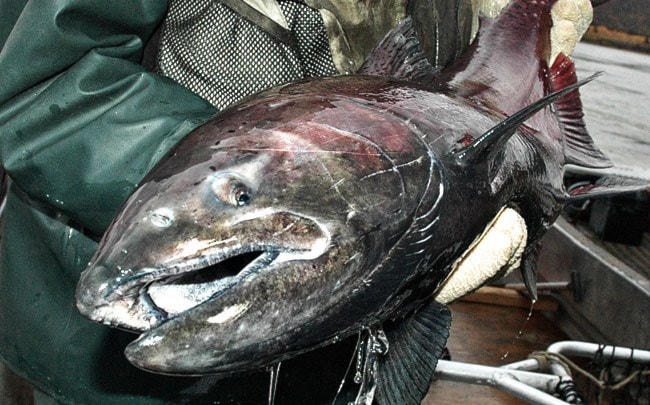Alaska is changing its management methods after overseeing one of the worst salmon runs in years.
Canada’s Department of Fisheries and Oceans received a letter from Alaska’s Department of Fish and Game in September and the Joint Technical Committee, which is made up of both Americans and Canadians, met last week in Whitehorse to discuss the run.
The first pulse of fish was harvested this year, and, as a result, escapement requirements were not met, Alaskan officials said in the letter.
Next year, they may allow the first pulse to have free passage, managers said.
Free passage for the first pulse was a technique championed by the Yukon Sub-Salmon Committee two years ago. It was tried, and worked.
This year, high water levels and cold weather was supposed to curb the fish harvest, said Alaska fisheries manager Steve Hayes.
This, combined with the projected count, shaped the management techniques used this year, he said.
“We expected the run to be below average, but we did expect escapement to be met,” Hayes said.
Many fishers along the river criticized Alaska for opening the summer chum commercial fishery. The openings resulted in an accidental catch of at least 10,000 Chinook – one quarter of which were predicted to be Canada-bound.
Net mesh-sizes, small time slots and heavy surveillance were all in effect to ensure Chinook were not being targeted by the commercial openings, said Hayes.
“We’ve had a poor run since 1998,” he said. “I fully expect, based on what we’ve been seeing with these poor runs, is that we will be looking at a conservative type of management next year. I can’t say what it will look like until I meet with the fishermen to come up with the plan, but I’m pretty positive there will be some type of reductions on the Alaskan side of the fishery.”
The Alaskans are receptive to Canadian needs, said Yukon’s area chief of resource management with DFO and committee co-chair Steven Smith.
“They wrote us a letter in black and white saying they will take positive measures,” he said.
“We have the benefit of seeing what comes up before our fisheries begin so we appreciate the challenges the US have, but we would like to see more in-season management action when it is obvious it should happen,” said Smith.
Yukon can only manage the fish that cross the border, but both sides are working to the same objective, he said.
Alaskans have pledged to move quicker on things that need to happen when the run is moving – not just stick to a plan established before they see what actually comes in from the ocean, Smith said.
“I do believe things will change.”
This year’s run has been one of the worst on record with only about 31,000 fish making it to the spawning grounds.
The Joint Technical Committee advises the Yukon River Panel who are responsible for the actual policy, legislation and funding. The committee will meet again in February, before the panel’s meeting in March.
Contact Roxanne Stasyszyn at roxannes@yukon-news.com
